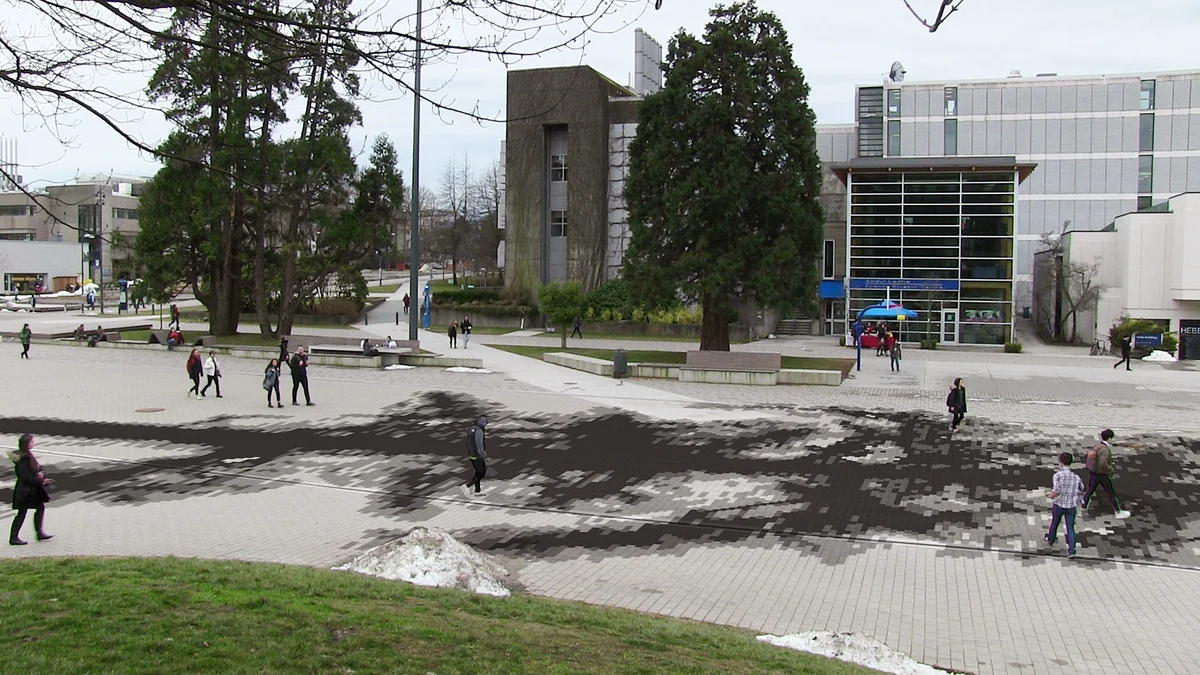
UBC has made it a mission to acquire more public art for its campus— but that often comes at an uncertain price.
When Esther Shalev-Gerz’s project The Shadow was first discussed by the University Art Committee (UAC), its estimated price was $200,000. By the time it was presented to students, the cost was pegged at $365,000. Currently, the project is expected to cost $450,000, of which $60,000 can be recouped for a total price of $390,000.
The Shadow isn’t the only piece that ended up costing more than expected. Meeting minutes from the University Art Committee (UAC) show that over the course of last year, estimated costs for projects around campus consistently grow well beyond initial expectations.
The relocation and repair of Cumbria, formerly placed between the Belkin Gallery and the Laserre Building, was anticipated to cost $150,000 — it will instead cost closer to $225,000. And while James Hart’s Reconciliation Pole was on its budget of $1.5 million, the incidental costs incurred by its installation added up to $618,298, which is $350,000 over the expected budget.
Calculating costs
Through the phases of conception, fabrication and installation, costs can easily increase. In the case of The Shadow, the increasing price was partially a matter of location.
“[Shalev-Gerz] didn’t walk into UBC with that idea in mind,” said Barbara Cole, curator of outdoor art at the Belkin Gallery.
“There had been a scale up in the size of the artwork — how many pavers. And then location ... to fill that site effectively would scale those shifts.”
The Shadow’s price is currently still in flux. Cole said that $378,000 has been spent on the project so far, with another $12,000 set aside for public promotion — but that too is an estimated cost.
Other fluctuations are harder to predict. In the case of Cumbria, which is being cleaned and relocated, the price shot up due to the presence of a gas under its new selected location between West Mall and University Boulevard, which Cole noted “is simple but very expensive to move.”
For Reconciliation Pole, a memorial to the survivors and victims of Canada’s Indian residential school system, the installation costs were driven up by a combination of logistical costs and special considerations for the nature of the piece. The 55-foot pole had to be safely transported and then stored on campus months before installation in the traditional Haida style, after which it was further reinforced by engineers.
“It’s not every day you have to transport a 50-foot totem pole,” said Michael White, associate vice-president of Campus and Community Planning.
Funding a community
As part of UBC’s Outdoor Art Strategy, White helps oversee the $2.5 million matching fund established by the university in 2011. With the exception of the Cumbria relocation, which is funded by private donations according to Cole, all the projects mentioned are financed by a 50-50 split of private donations and the fund, which is sourced from a charge on private developers.
“It’s a mechanism similar to what similar municipalities do, which is levy charges and then apply them to public art,” said White. “It’s not part of academic funding in any fashion.”
He indicated it still had “a little less than half” of its original $2.5 million allotment.
Despite this, the misconception that The Shadow was funded by tuition has exacerbated backlash to the project from students, many of whom complained that they were not adequately consulted on its installation.
While the UAC has a student member, that member was not invited to join until November 14 of last year, meaning the student seat was vacant from May until near the year’s end. Cole noted that the delay was because the UAC meets very infrequently, and tries to time its invitations for when most projects are being reviewed.
“We only meet two or three times a year,” explained Cole. “And from May to the end of the summer, there are usually no actions to review.”
In response to concerns about pricing, Cole stressed that the high cost of such installations is “typical just about anywhere.”
“Public art in a municipal concept is seen as a cost of growth,” said White.
“The importance of that underpins all the conversations we have. It’s an integral part of the community.”


![['']](https://storage.googleapis.com/ubyssey/media/renditions/_DSC0524.original.jpg)